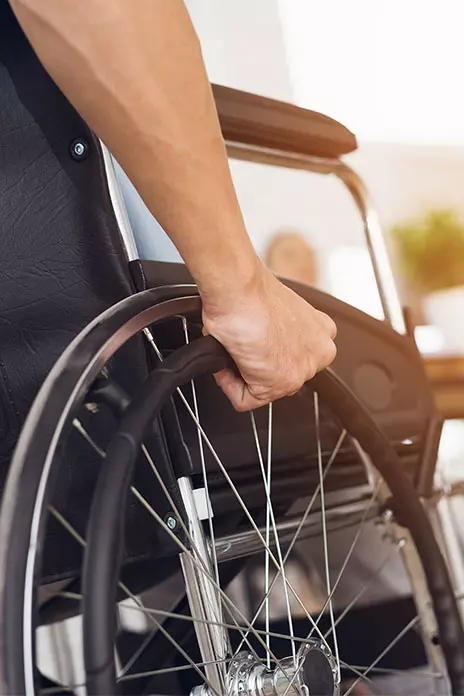A spinal cord injury is one of the most severe forms of physical harm you can suffer. A spinal cord injury can lead to debilitating injuries that require a long time to heal. In fact, some injuries may never heal. You could face paralysis in limited parts of your body or even total paralysis.
The causes of spinal cord injuries vary greatly. While some are medical conditions, many spinal cord injuries result from a tragic accident. Car accidents, slips and falls, and much more may be why you are so badly hurt. Below we explore some of the most common causes of spinal cord injuries.
What Causes Spinal Cord Injuries?
Spinal cord injuries may result from any number of accidents, events, or even intentional acts. Spinal cord injuries can cause serious pain and damage to the muscles in your back. They can also require long-term rehabilitation as you recover from your injuries.
Common causes of spinal cord injuries include:
Motor Vehicle and Truck Accidents
Motor vehicle accidents are among the most common reasons for severe back and spinal cord injuries. Motor vehicles are capable of high speeds, and impacts between them can cause devastating damage to your body. These accidents can damage the bone, make you lose sensation in some body parts, and even affect bladder control and other bodily functions.
A negligent driver usually causes motor vehicle accidents. Negligence occurs when a driver breaches their duty of care towards you and causes your injuries as a result. Their wrongful or careless actions may cause a truck accident, commercial vehicle, motorcycle collision, or typical car accident. When this occurs, that negligent driver is likely responsible for the financial costs your injuries have incurred. They may also owe you compensation for your pain and suffering.
Diving Incidents and Other Sporting Activities
Sports are fun recreational activities, but they are not without their dangers. Sports injuries often result in significant pain, muscle damage, and even spinal cord injuries. The spinal cord is especially vulnerable to major impacts during a sporting event, such as tackling or falling. Many sports-related injuries can lead to paralysis, loss of sexual function, and many other spinal cord injury symptoms.
Diving incidents are prevalent causes of spinal cord injuries. When a person dives into a pool or other body of water, they should ensure there is enough water depth to permit the dive. The higher a person dives, the more depth is required. Otherwise, the person could strike the bottom of the pool headfirst.
Falls
A slip-and-fall accident can happen to anyone. It is especially dangerous to older adults and those with pre-existing medical conditions that make them more susceptible to slip and fall injuries. Fall accidents are common in grocery stores, hotels, and other buildings that the public frequently visits. Hazards like spills, defective staircases, a deck collapse, and more can cause serious harm.
Spinal cord injuries are commonly the result of a slip-and-fall accident. If a person lands on their back or twists their spinal cord in the fall, serious harm to the spinal cord is likely. It may lead to bruising, tearing, or even detachment in severe situations. A seemingly simple fall accident may result in permanent or long-lasting spinal cord injury symptoms.
What Are Spinal Cord Injury Levels and Why Do They Matter?
A spinal cord injury can impact four different sections of the spinal cord. These four sections include:
- Cervical: The cervical spine affects the head and neck region above a person's shoulders. These are the most serious level of spinal cord injuries.
- Thoracic: A thoracic spinal cord injury affects the mid-back, upper chest, and abdominal muscles. They can also affect hand and arm function and areas below the injury.
- Lumbar: Lumbar spinal cord injuries are in the lower back and often affect the legs and hips. This may cause paraplegia and require a person to use a wheelchair for the rest of their life.
- Sacral: A sacral spinal cord injury occurs in the lowest part of the spine and tailbone. These injuries usually affect the thighs, buttocks, and pelvic organs.
Spinal cord injuries may also be complete or incomplete. A complete injury causes total paralysis below a certain level of the body. An incomplete injury means that some bodily function remains.
What type of injury you suffered matters because the type of injury often dictates what symptoms you will suffer. The higher along the spinal cord that it is damaged, the more global your symptoms are likely to be. For example, an injury in your cervical spine could result in quadriplegia, causing paralysis in nearly your entire body. The level of your injuries and their associated symptoms will also affect the amount of compensation you are owed in a personal injury lawsuit.
Seeking Compensation for Your Spinal Cord Injury?
At Dunn Sheehan, we can help you seek compensation for your spinal cord injury. We know how to investigate your case and determine who is liable for your injuries. Our spinal cord injury attorneys help clients hold negligent defendants responsible for the harm they have caused. You may be entitled to compensation, such as lost income, medical bills, pain and suffering, and so much more.
Our trial firm is comprised of dedicated personal injury attorneys who can help you seek compensation for your spinal cord injury case. Contact us today for a consultation on your spinal cord injury case.

